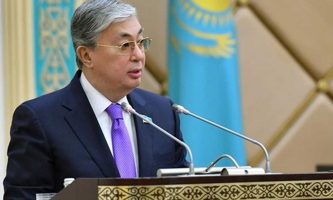United Airlines Flight UA770 Emergency Diversion: What Happened and Latest Updates

Recently, there was a United Airlines Flight UA770 emergency diversion mid-flight. As a result, this situation drew widespread attention to aviation safety protocols. Moreover, there were recommendations about crisis response measures.
At the outset, the incident occurred during a routine domestic journey between Los Angeles and Chicago. As a result, there was renewed interest in how airlines manage unexpected technical anomalies. Moreover, people wanted to know how they safeguard passengers in high-stress situations.
Therefore, read on to get a better idea of the United Airlines Flight UA770 emergency diversion. Also, you will know more about the timeline and crew response. Moreover, you will learn about its broader implications for the aviation industry.
What Happened Mid-Air on the United Airlines Flight UA770?
Initially, United Airlines Flight UA770 was cruising at altitude. Afterward, the flight crew detected a technical anomaly that required immediate attention.
However, the airline did not disclose the exact nature of the malfunction. Despite that, many experts speculated the involvement of the following critical systems:
- Engine monitoring
- Cabin pressurization
- Fuel management
Basically, in those scenarios, pilots get training to act swiftly and decisively. Apart from that, the crew also followed standard emergency protocols. Also, they communicated with air traffic control and followed the safest course of action.
Finally, they chose to divert the flight to Denver International Airport. This decision was necessary to ensure safety and infrastructure readiness.

What Was the United Airlines Flight UA770 Crew’s Response?
The response of the United Airlines Flight UA770 flight crew was nothing short of exemplary. The following is the sum-up of their response:
- Every member of the team executed their roles with precision and composure.
- The captain initiated emergency procedures properly. They also coordinated well with air traffic control.
- Meanwhile, the crew also kept passengers informed with simple and reassuring announcements.
- Flight attendants effectively managed the cabin environment with practiced calm.
- Attendants also reassured passengers and maintained order. Moreover, they ensured that everyone remained seated and secure.
United Airlines Flight UA770 Emergency Diversion: Why Denver?
The following are some of the major reasons why the crew chose Denver International Airport as the diversion point:
1. Geographically Close
Denver International Airport was the closest major airport. Also, it had the capacity to handle emergency landings.
2. Equipped for Emergency
It also has advanced facilities. Moreover, trained personnel operate there to manage unscheduled arrivals.
3. Favorable Weather
Since the weather was favorable, a safe landing at the Denver International Airport was more feasible.
After the United Airlines Flight UA770 arrived at the Denver International Airport, emergency response units were on standby. Then, they guided the flight to a remote stand for inspection. In addition to that, maintenance crews did a thorough evaluation. This way, they identified the root cause of the issue.
What Was the Passenger Experience?
Obviously, the passengers in United Airlines Flight UA770 were tense at first. However, the crew reassured them with transparent communication and calmness. Apart from that, people showed gratitude to the crew through social media posts and interviews.
Due to the emergency diversion, there was a delay in the flight. But most passengers appreciated that the crew prioritized safety over scheduled arrival.
The incident has been a powerful reminder of why trust in airline operations is necessary. Also, it upheld the value of transparent communication during emergencies.
What Was the Response of United Airlines Officials?
After the incident took place, United Airlines confirmed the precautionary diversion of Flight UA770. Also, it commended the crew for their professionalism. Moreover, the airlines confirmed that no injuries took place during the incident. Furthermore, they rebooked all the passengers on alternative flights.
In addition to that, United Airlines also stated the following as post-incident procedures:
- Instant technical inspection of the aircraft.
- Communicating fully with federal aviation authorities.
- Ensuring full transparency and focusing on improved safety.
Apart from that, United Airlines also restated that it is dedicated to learning from every situation. Hence, they utilized this opportunity to refine their protocols. Also, they took necessary steps to improve passenger safety.

Major Lessons from the United Airlines Flight UA770 Emergency Diversion
There are multiple valuable lessons from the United Airlines Flight UA770 emergency diversion incident. Essentially, they show the resilience of modern aviation systems.
Also, it shows that the diversion was far from being a failure. Rather, it shows how well the system functions even when pressure is lurking.
The following are some of the major lessons from the United Airlines Flight UA770 incident:
- Rigorous pilot and crew training is absolutely uncompromisable.
- Every airline company must focus on investing and developing advanced aircraft systems..
- There is no alternative to efficient coordination between teams.
- Passenger welfare and transparent communication are of utmost priority.
Basically, for any airline company, every incident is a lesson to learn and reflect. This helps them improve for the better. Moreover, it also shows that safety is always the topmost priority in air travel. This holds even if it leads to a detour or a delay.
Frequently Asked Questions (FAQs): United Airlines Flight UA770 Emergency Diversion
The following are some of the most common questions you will find about the United Airlines Flight UA770 emergency diversion incident:
The United Airlines Flight UA770 emergency diversion incident happened due to a mid-flight technical anomaly. However, it is important to note that the airline did not disclose the exact issue.
Meanwhile, what matters is that the crew followed standard safety protocols. Moreover, they chose a safety landing at Denver International Airport.
No. There were no injuries during the United Airlines Flight UA770 emergency diversion incident. Rather, the flight crew managed to deal with the situation calmly and professionally.
After the emergency diversion incident, United Airlines rebooked all passengers on the next available flights. Apart from that, they provided necessary accommodations. Also, they issued official statements to communicate the situation. Basically, passenger safety with minimal inconvenience was their topmost priority.
A Professional Act Indeed!
It is evident that the United Airlines Flight UA770 emergency diversion incident was a pure example of the supremacy of modern aviation systems. It also shows how these systems are able to respond to unexpected challenges.
Primarily, the crew took decisive actions. Then the ground team also coordinated accordingly. Both handled the incident with precision and professionalism.
Of course, no one boards a flight that expects a diversion. Despite that, these incidents show that safety is not merely a protocol. Rather, it is a promise that aviation companies make to passengers. Moreover, when they uphold those promises, like the aviation crew of United Airlines Flight UA770, it increases people’s trust.
Read Also:











